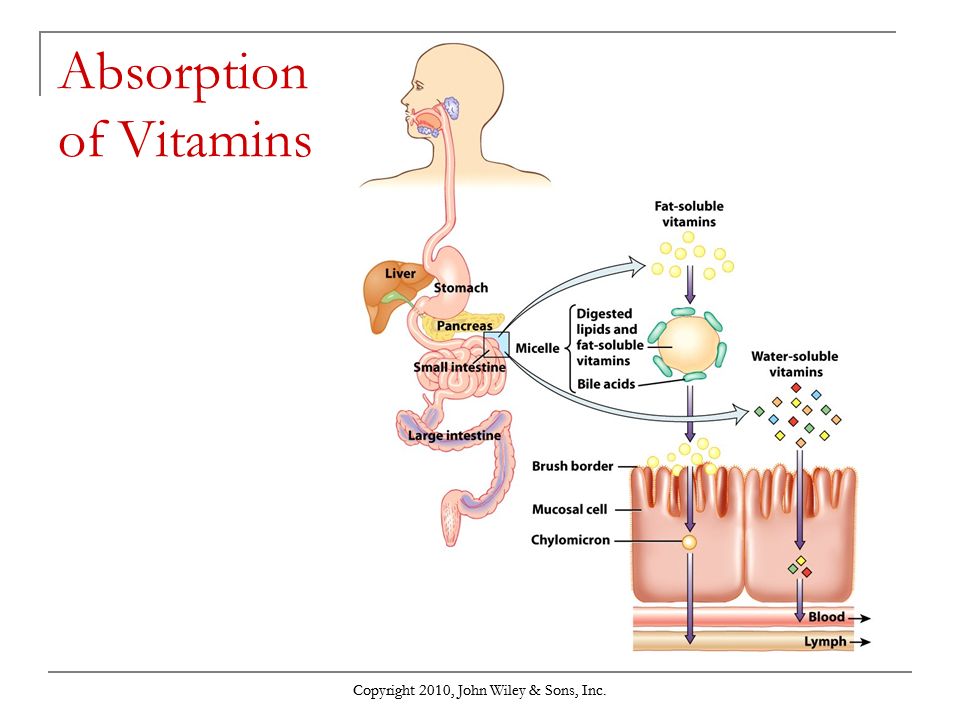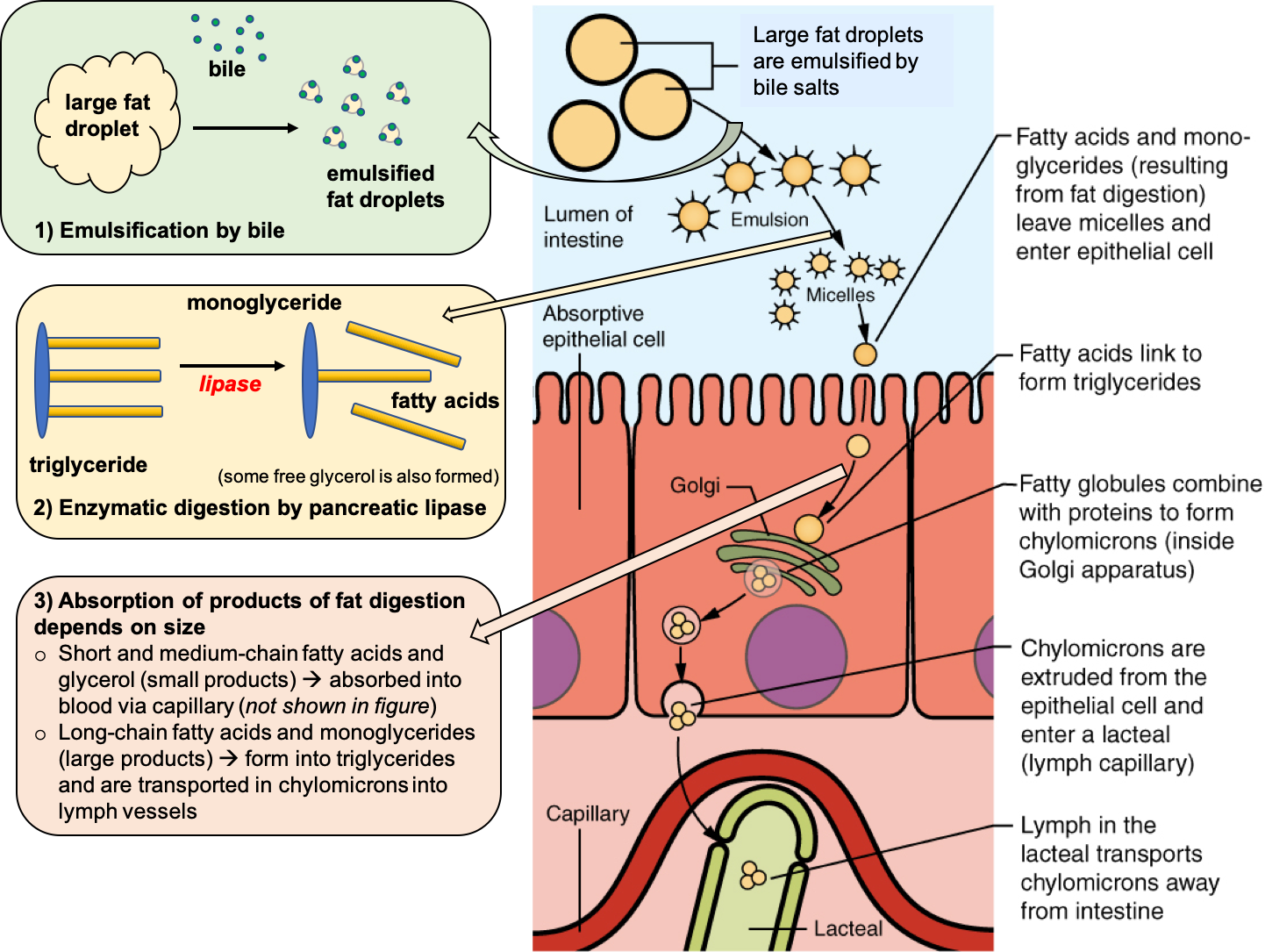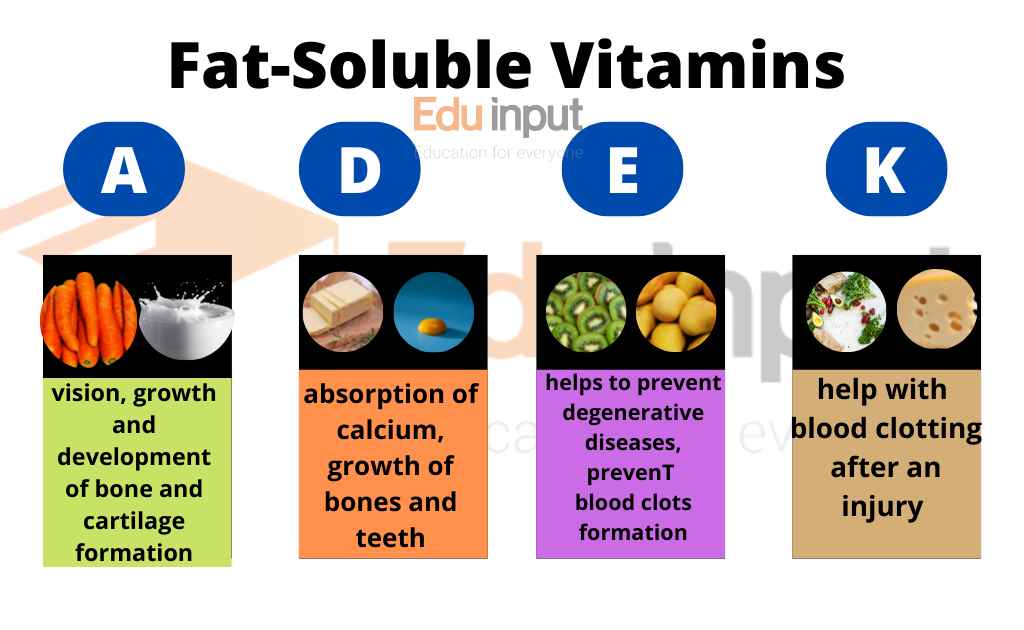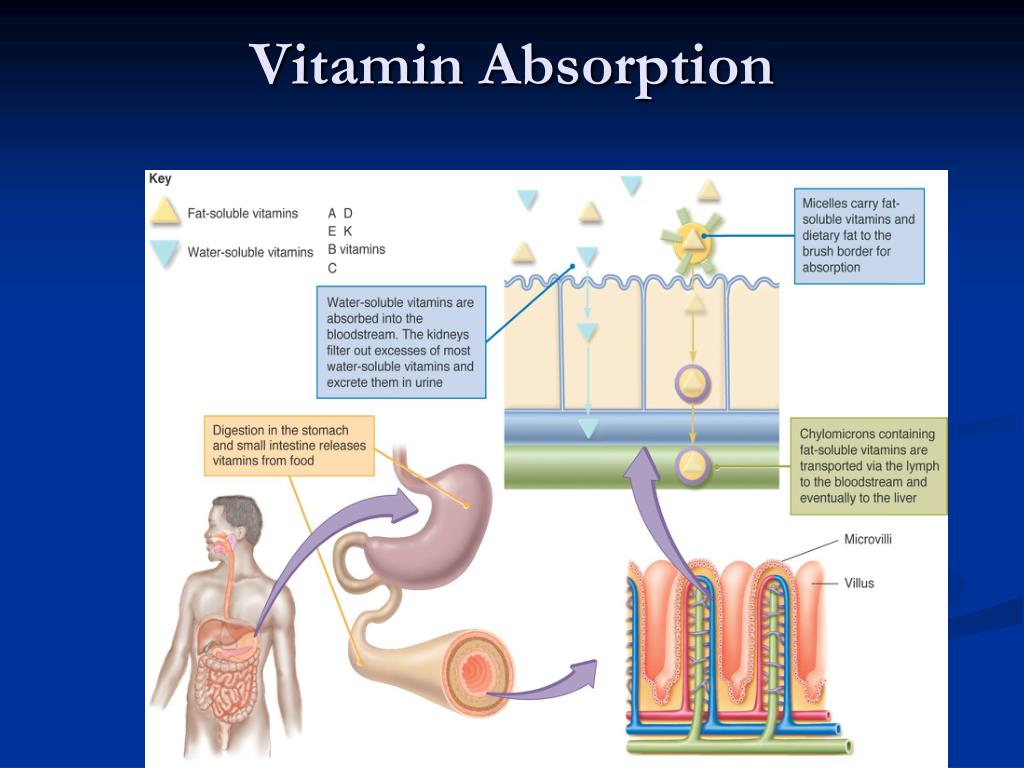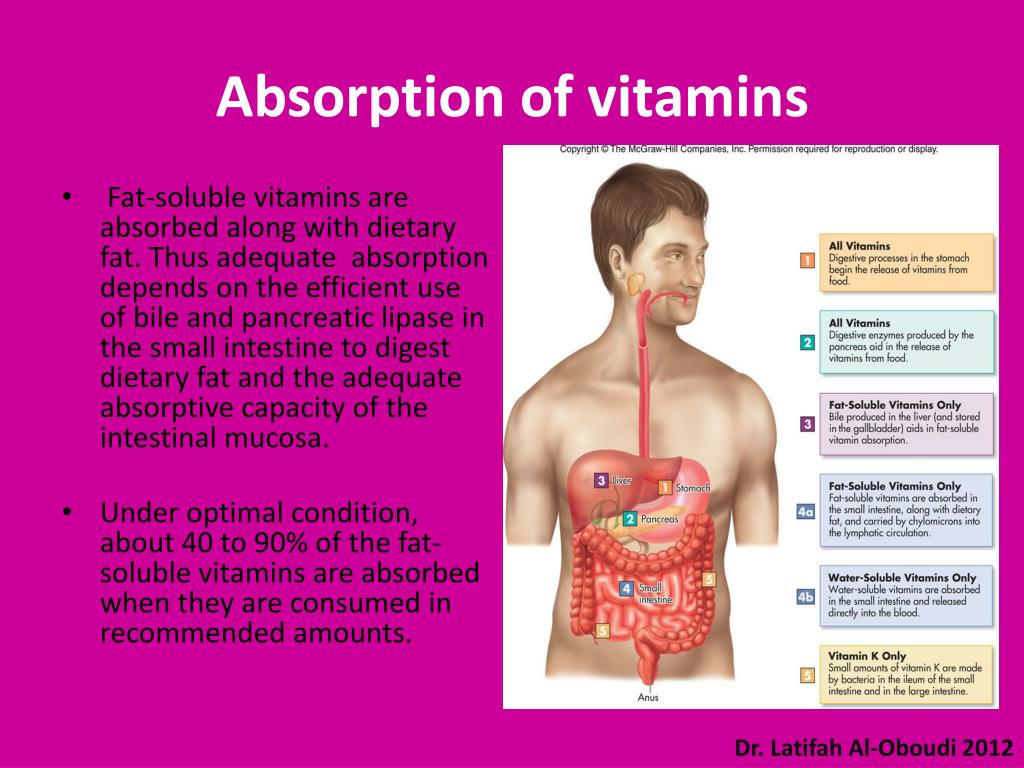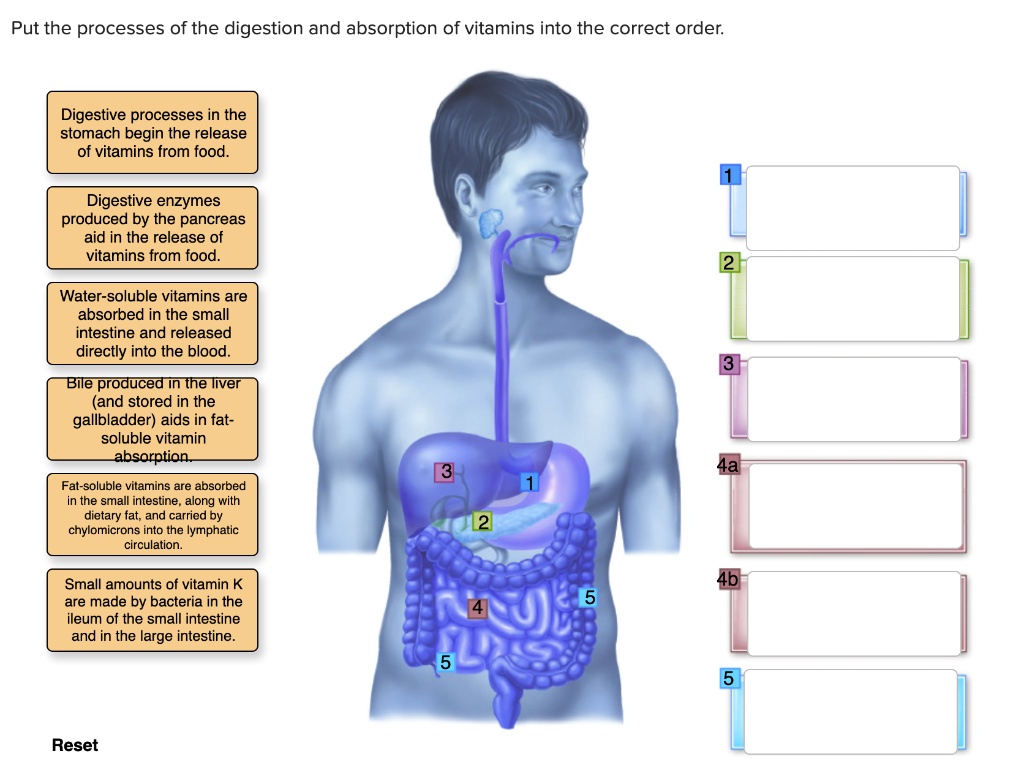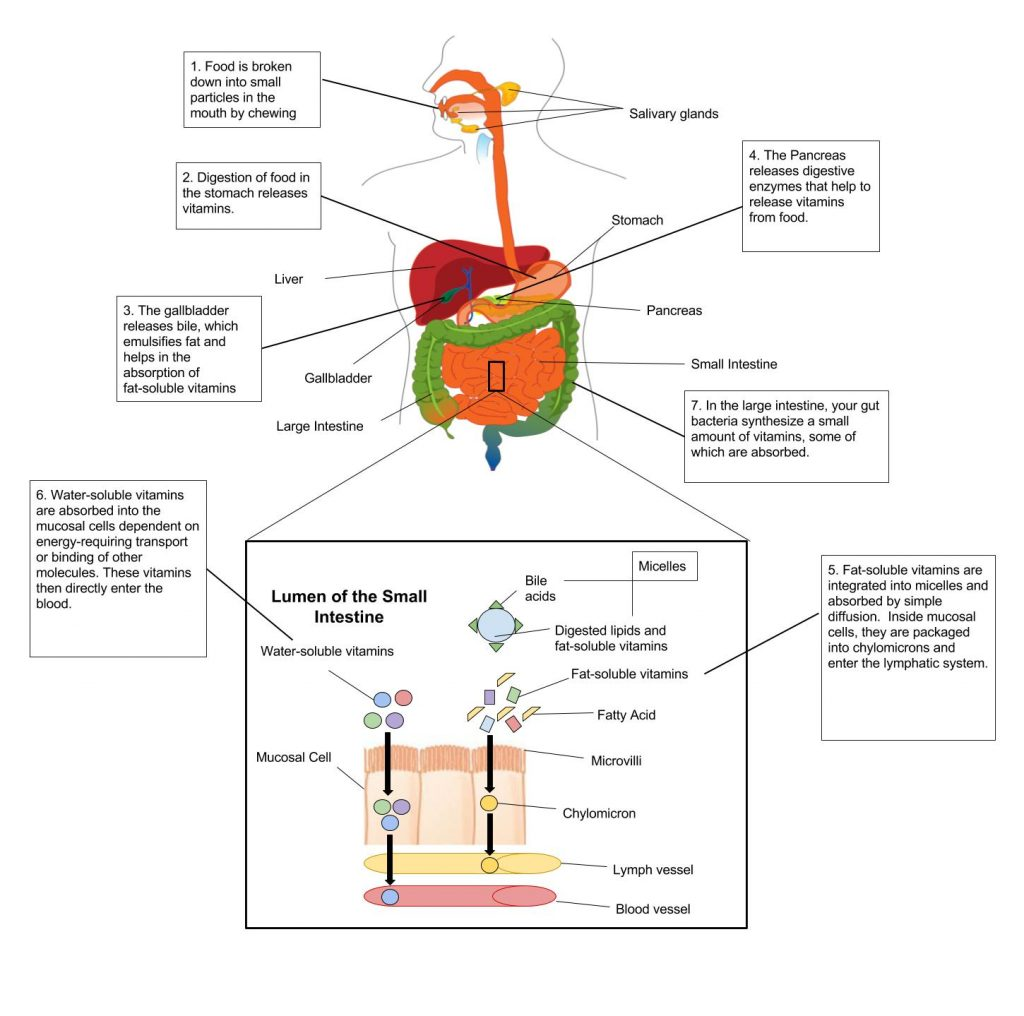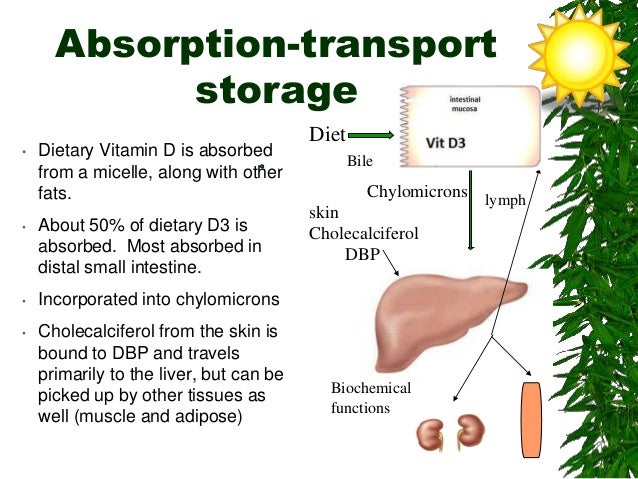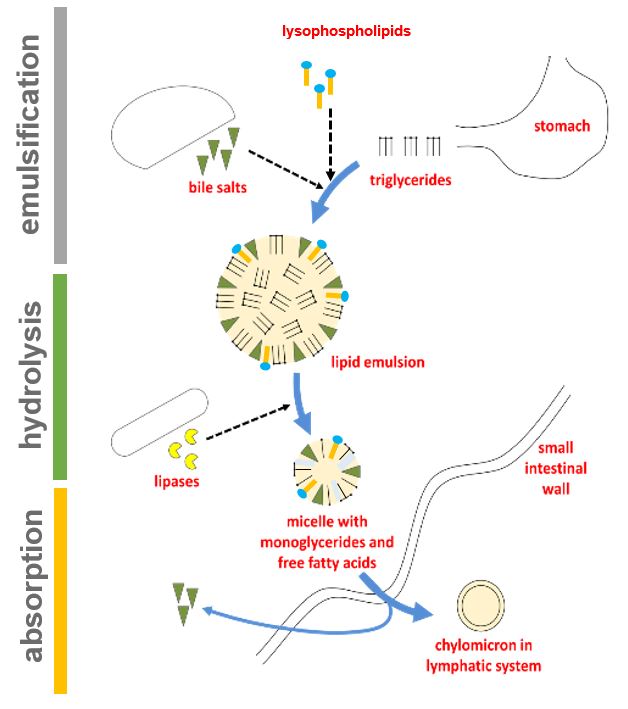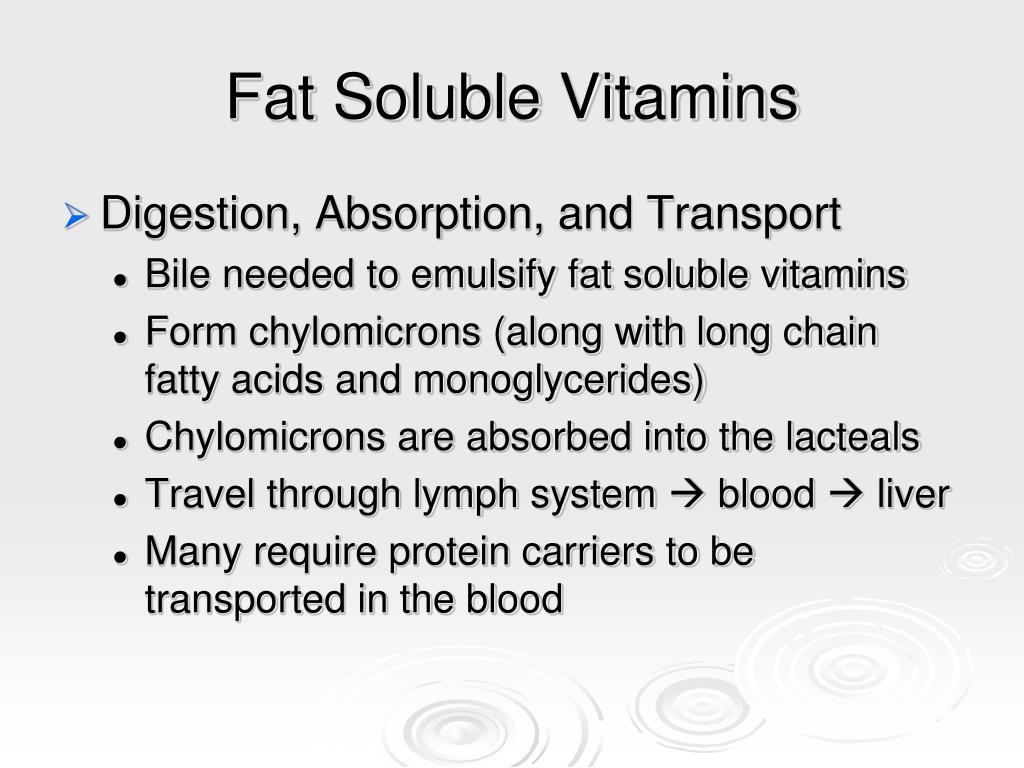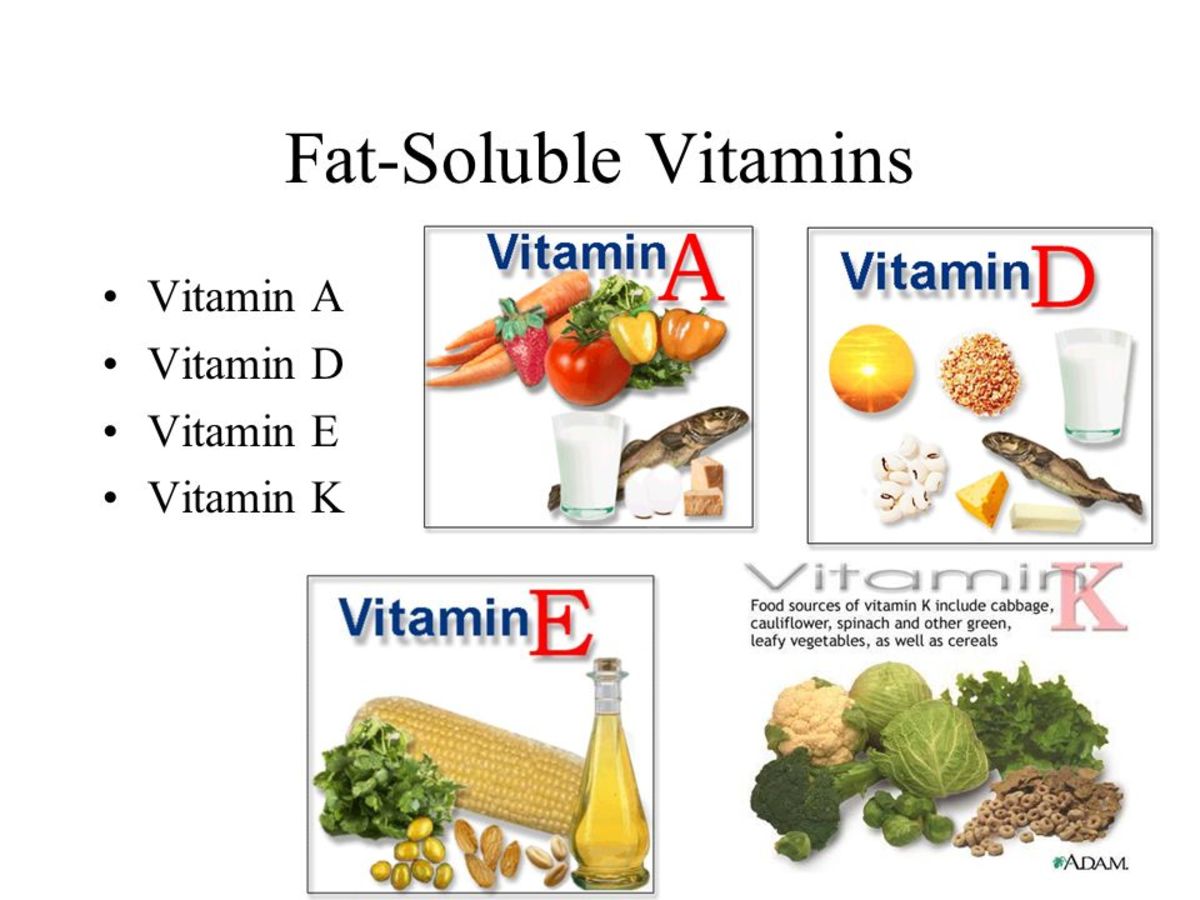Fat-soluble Nutrients Are Absorbed Into The

The intricate process of nutrient absorption is fundamental to human health, and understanding how our bodies utilize essential elements is crucial for maintaining well-being. Recent research and ongoing studies continue to shed light on the specific mechanisms governing the absorption of fat-soluble nutrients, offering valuable insights for dietary guidelines and nutritional interventions.
The absorption of fat-soluble vitamins (A, D, E, and K) is a complex physiological process that relies heavily on dietary fats. Unlike their water-soluble counterparts, these vitamins require the presence of lipids to be properly dissolved and transported across the intestinal lining into the bloodstream.
This article will delve into the science behind fat-soluble nutrient absorption, outlining the key players involved, the challenges encountered, and the implications for individual health and public health recommendations.
The Players Involved in Fat Absorption
The absorption of fat-soluble nutrients begins in the stomach, where gastric lipase initiates the breakdown of triglycerides into diglycerides and fatty acids.
However, the bulk of the digestion and absorption occurs in the small intestine, specifically the duodenum and jejunum.
Here, bile, produced by the liver and stored in the gallbladder, emulsifies the fats, breaking them into smaller droplets that are more easily accessible to digestive enzymes.
Pancreatic lipase then further breaks down the triglycerides into monoglycerides and fatty acids.
Micelle Formation
A crucial step in the process is the formation of micelles. These are tiny, spherical aggregates composed of bile salts, phospholipids, cholesterol, and the products of lipid digestion (monoglycerides, fatty acids, and fat-soluble vitamins).
Micelles act as transport vehicles, carrying the fat-soluble vitamins and other lipids to the surface of the enterocytes, the cells lining the small intestine.
Because the outer layer of micelles is water-soluble, it allows the fat-soluble compounds to traverse the aqueous environment of the intestinal lumen and approach the enterocytes.
Absorption by Enterocytes
Once at the surface of the enterocytes, the fat-soluble vitamins and other lipids are absorbed into the cells.
This process primarily occurs through passive diffusion, though some evidence suggests that specific transport proteins may also play a role for certain vitamins.
Inside the enterocytes, the monoglycerides and fatty acids are re-esterified to form triglycerides.
These triglycerides, along with the absorbed cholesterol and fat-soluble vitamins, are then packaged into structures called chylomicrons.
Chylomicron Transport
Chylomicrons are large lipoprotein particles that transport dietary fats and fat-soluble vitamins from the enterocytes into the lymphatic system.
Due to their large size, chylomicrons cannot directly enter the bloodstream.
Instead, they are released into the lacteals, specialized lymphatic vessels within the intestinal villi.
The lymphatic system eventually drains into the bloodstream, allowing the chylomicrons to deliver their cargo of triglycerides and fat-soluble vitamins to tissues throughout the body.
Factors Affecting Fat-Soluble Nutrient Absorption
Several factors can influence the efficiency of fat-soluble vitamin absorption.
One of the most significant is dietary fat intake. Adequate fat intake is essential for the proper formation of micelles and the subsequent absorption of these vitamins.
Conditions that impair fat digestion or absorption, such as cystic fibrosis, celiac disease, and Crohn's disease, can lead to fat-soluble vitamin deficiencies.
"Individuals with these conditions often require supplementation with fat-soluble vitamins, often in a water-soluble form to bypass the impaired fat absorption mechanisms," according to Dr. Emily Carter, a gastroenterologist at the National Institutes of Health.
Furthermore, certain medications, such as orlistat (a weight-loss drug that inhibits pancreatic lipase), can interfere with fat digestion and reduce the absorption of fat-soluble vitamins.
Implications for Health and Dietary Recommendations
Understanding the intricacies of fat-soluble nutrient absorption is crucial for developing effective dietary recommendations and addressing nutrient deficiencies.
Ensuring adequate fat intake, particularly of healthy fats, is essential for optimizing the absorption of these vital vitamins.
For individuals with malabsorption disorders, healthcare professionals may recommend specific dietary modifications, enzyme replacement therapies, or supplementation with water-soluble forms of fat-soluble vitamins.
Public health initiatives aimed at promoting healthy eating habits should emphasize the importance of balanced diets that include sufficient amounts of both fat and fat-soluble vitamins.
The RDA (Recommended Daily Allowance) guidelines established by organizations like the Food and Nutrition Board (FNB) consider the varying needs of different populations, taking into account factors such as age, sex, and physiological status (e.g., pregnancy and lactation).
Further research is ongoing to explore the potential role of specific gut microbiota in modulating fat-soluble vitamin absorption and the impact of dietary interventions on gut health and nutrient bioavailability.
Conclusion
The absorption of fat-soluble nutrients is a complex and highly regulated process that is essential for maintaining overall health. Understanding the key players involved, the factors that influence absorption, and the implications for health and dietary recommendations is vital for healthcare professionals and individuals alike.
By paying attention to dietary fat intake, addressing underlying malabsorption disorders, and following evidence-based dietary guidelines, individuals can optimize their absorption of these crucial nutrients and support long-term health and well-being.
Continuing research will further refine our understanding of these processes, leading to more targeted and effective strategies for preventing and treating nutrient deficiencies.
